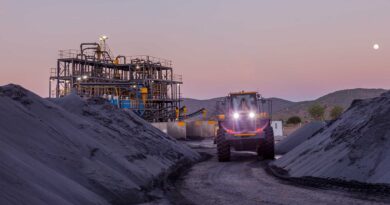COP26: The economics of the energy transition
The world is warming because of emissions from fossil fuels like coal, oil and natural gas, caused by humans. The past decade was the warmest on record, and governments agree urgent collective action is needed.
The COP26 event is a global United Nations summit about climate change and how countries are planning to tackle it. The meeting in Glasgow from 31 October to 12 November could lead to major changes to our everyday lives. For this conference, 200 countries are being asked for their plans to cut emissions by 2030.
ECONOMICS IS BOTH A PROBLEM AND SOLUTION FOR CLIMATE CHANGE
Based on current evidence, the global economy is set to double in size by 2050. Targeting unbridled growth makes economic sense but keeping a 1.5 °C pathway in sight will require rapid reduction in the carbon intensity of economic activity.
The final briefing in our weekly series in the run up to COP26 explores the key considerations for the global economy in energy transition. Fill in the form to read the report, or read on for a quick overview.
Continued global economic growth must be offset by massive emissions reductions
Limiting global warming to 1.5°C presents a colossal challenge. Current mitigation isn’t even close to what’s required. Our base case sees annual energy-related CO2 emissions fall slightly. But to hit the 1.5 °C target, global carbon intensity must drop massively – from 0.39 kg per US$ of GDP in 2020 to a mere 0.03 kg.
The energy transition is all about shifting economic activity from high-carbon to low-carbon intensive sectors. As things stand, greenhouse gas emissions are not fully priced in the market. Economies therefore lack sufficient incentives to invest in the development and use of emissions-reducing technologies.
ECONOMICS HAS A CENTRAL ROLE TO PLAY IN EMISSIONS MITIGATION
Economics does have a positive role to play in shaping the energy transition. Firstly, it can be used to put a value on the financial impact of climate change. Secondly, it can help design and evaluate tools for mitigation; these include regulations, incentives for developing new technology, and the development of a global carbon market.
However, the COP26 goal of mobilising US$100 billion per year for mitigation and adaption investments is a fraction of the $US50 trillion investment required in low-carbon power supply.
Some economies and sectors will fare better than others.
A 1.5 °C pathway will have both economic costs and benefits. The economic impacts of mitigation will not be symmetrical, with some sectors and countries hit hard while others prosper. Determining mitigation’s costs will involve analysis of various factors; these include current carbon intensity, clean energy potential, fiscal strategy and the intended timeframe for transition to a low-carbon model.




